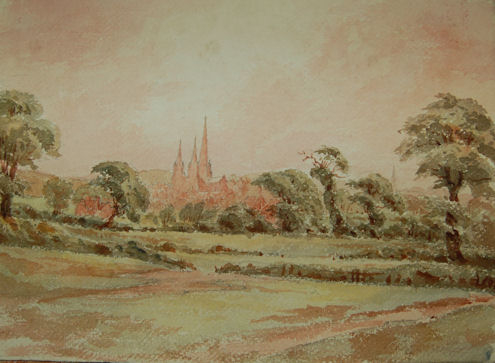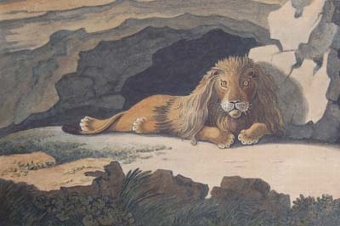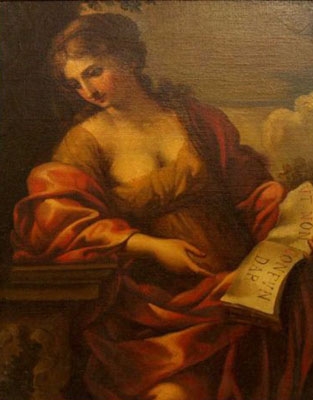Lichfield is a cathedral city, civil parish[1] and district in Staffordshire, England. One of eight civil parishes with city status in England, Lichfield is situated roughly 25 km (16 miles) north of Birmingham and 200 km (124 miles) northwest of London.
Lichfield is notable for its three-spired cathedral and as the birthplace of Samuel Johnson, the writer of the first authoritative Dictionary of the English Language. Today it still retains its old importance as an ecclesiastical centre, but its industrial and commercial development has been relatively small; the centre of the city thus retains an essentially old-world character. In July 2009, the Staffordshire Hoard, the largest hoard of Anglo-Saxon gold ever found in Britain was discovered in a field five miles (8 km) from Lichfield.
The population of the city according to the 2001 census is 27,900 and the wider Lichfield district has a population of 93,237. In mid-2007, the city had an estimated population of 30,050 from the estimated headcounts of its electoral wards Boley Park, Chadsmead, Curborough, Leomansley, St. Johns and Stowe. Legend has it that a thousand Christians were martyred in Lichfield around AD 300, during the reign of the Roman Emperor Diocletian, and that the name ''Lichfield'' actually means ''field of the dead'' (see Lich). There is however, no evidence to support this legend.[3] At Wall, 3 miles (5 km) to the south of the present city, there was a Romano-British village called Letocetum from the British (Celtic) for "grey wood", from which the first half of the name Lichfield is derived. The second part of the name is derived from the Old English "feld", meaning ''open country''. In that sense ''Lichfield'' would be ''common pasture in grey wood'', ''grey'' perhaps referring to varieties of tree prominent in the landscape, such as ash and elm. The earliest evidence of settlement has been the discovery of Mesolithic flints on the high ground of St Michael?s churchyard, which may indicate an early flint industry. Traces of Neolithic settlement have been discovered on the south side of the sandstone ridge occupied by the Cathedral.Two miles south west of Lichfield, near the point where Ryknild Street crosses Watling Street was the site of the Roman town of Letocetum. Established in 50 as a military fortress, by the 2nd century it had become a civilian settlement with a bath house and a mansio.[6] Letocetum fell into decline by the 4th century and the Romans had left by the 5th century. There have been scattered Romano-British finds in Lichfield, and it is possible that a burial discovered beneath the cathedral in 1751 was Romano-British. There is no evidence as to what happened to Letocetum after the Romans left, however Lichfield may have emerged as its inhabitants relocated during its decline.The early history of Lichfield is obscure. The first authentic record of Lichfield occurs in Bede''s history, where it is called Licidfelth and mentioned as the place where St Chad fixed the episcopal see of the Mercians in 669. The first Christian king of Mercia, King Wulfhere donated land at Lichfield for Chad to build a monastery. It was because of this that the ecclesiastical centre of the Diocese of Mercia became settled at Lichfield, which was approximately 7 miles (11 km) north of the seat of the Mercian kings at Tamworth. The first cathedral to be built on the present site was in 700 when Bishop Hedda built a new church to house the bones of St Chad which had become a sacred shrine to many pilgrims when he died in 672. The burial in the cathedral of the kings of Mercia, King Wulfhere in 674 and King Ceolred in 716, further increased the prestige of Lichfield. In 786 Offa, King of Mercia, raised Lichfield to the dignity of an archbishopric, with authority over all the bishops from the Humber to the Thames. However after King Offa''s death in 796, Lichfield''s power waned and in 803 the primacy was restored to Canterbury by Pope Leo III after only 16 years. The Historia Britonum lists the city as one of the 28 cities of Britain around AD 833.During the 9th century, the Kingdom of Mercia was devastated by the Vikings from Denmark. Lichfield itself was unwalled and the cathedral was despoiled, so Bishop Peter moved the see to the fortified and wealthier Chester in 1075.
The Staffordshire Hoard was discovered in a field near Lichfield
His successor, Robert de Limesey, transferred it to Coventry, but it was eventually restored to Lichfield in 1148. Work began on the present Gothic cathedral in 1195. At the time of the Domesday survey, Lichfield was held by the bishop of Chester, where the see of the bishopric had been moved 10 years earlier; Lichfield was listed as a small village. The lord of the manor was the bishop of Chester until the reign of Edward VI.Bishop Clinton was responsible for transforming the scattered settlements to the south of Minster Pool into the ladder plan streets we recognise today. Market Street, Wade Street, Bore Street and Frog Lane linked Dam Street, Conduit Street and Bakers Lane on one side with Bird Street and St John Street on the other. Bishop Clinton also fortified the cathedral close, enclosed the town with a bank and ditch, and gates were set up where roads into the town crossed the ditch. In 1291 Lichfield was severely damaged by a fire, which destroyed most of the town, however the Cathedral and Close survived unscathed.In 1387 Richard II gave a charter for the foundation of the gild of St Mary and St John the Baptist; this gild functioned as the local government, until its dissolution by Edward VI, who incorporated the town in 1548.Henry VIII had a dramatic affect on Lichfield. The Reformation brought the disappearance of pilgrim traffic following the destruction of St Chad''s shrine in 1538 which was a major loss to the city''s economic prosperity. That year too the Franciscan Friary was dissolved, the site becoming a private estate. Further economic decline followed the outbreak of plague in 1593, which resulted in the death of over a third of the entire population.
Three people were burned at the stake for heresy under Mary I. The last person in England to be burnt at the stake for heresy was in Lichfield. Edward Wightman from Burton upon Trent was burnt at the stake in the Market Place on 11 April 1612 for his activities promoting himself as the divine Paraclete and Savior of the world.In the English Civil War, Lichfield was divided. The cathedral authorities, with a certain following, were for the king, but the townsfolk generally sided with the Parliament. This led to the fortification of the close in 1643. Lichfield''s position as a focus of supply routes had an important strategic significance during the war, and both forces were anxious for control of the city. Lord Brooke, notorious for his hostility to the church, led an assault against it, but was killed by a deflected bullet on St Chad''s day, an accident welcomed as a miracle by the Royalists. The close yielded and was retaken by Prince Rupert of the Rhine in this year; but on the breakdown of the king''s cause in 1646 it again surrendered. The cathedral suffered extensive damage from the war, including the complete destruction of the central spire. It was subsequently restored at the end of the Commonwealth period under the supervision of Bishop Hacket, and thanks in part to the generosity of King Charles II.Lichfield started to develop a lively coaching trade as a stop-off on the busy route between London and Chester from the 1650s onwards, making it Staffordshire''s most prosperous town. In the 18th century and reaching its peak in the period from 1800?1840, the city thrived as a busy coaching city on the main routes from London to the north-west and Birmingham to the north-east. It also became a centre of great intellectual activity being the home of many famous people including Samuel Johnson, David Garrick, Erasmus Darwin and Anna Seward, this prompted Johnson''s remark that Lichfield was "a city of philosophers". In the 1720s Daniel Defoe described Lichfield as ''a fine, neat, well-built, and indifferent large city'', the principal town in the region after Chester. During the late 18th and early 19th century much of the medieval city was rebuilt the with red brick Georgian style buildings we see today. Also during this time the city underwent vast improvements with underground sewerage systems, paved streets and gas powered street lighting An infantry regiment of the British Army was formed at Lichfield in 1705 by Col. Luke Lillingstone in the King''s Head pub in Bird Street. In 1751 it became the 38th regiment of foot and in 1783 the 1st Staffordshire Regiment; after reorganization in 1881 it became the 1st battalion of the South Staffordshire Regiment. The arrival of the Industrial Revolution and the railways in 1837 signaled the end of Lichfield''s position as an important staging post for coaching traffic. Whilst the industrial development at nearby Birmingham exploded, along with its population, Lichfield remained largely unchanged in character.
The first council houses were built in the Dimbles area of the city in the 1930s. The outbreak of World War II brought over 2000 evacuees from industrialised areas. However due to the lack of heavy industry in the city, Lichfield escaped lightly, although there were air raids in 1940 and 1941 and 3 Lichfeldians were killed. Just outside the city Wellington Bombers flew out of Fradley Aerodrome which was known as RAF Lichfield. After the war the council built many new houses in the 1960s including some high-rise flats, the late 70s and early 80s brought a large housing estate at Boley Park in the east of the city. The city''s population tripled between 1951 and the late 1980s. The city has continued expanding to the west, the Darwin Park housing estate has been under development for a number of years and has swelled the city''s population by approximately 3,000. Plans have been approved for Friarsgate, a new ?100 million shopping and leisure complex opposite Lichfield City Station. The police station, bus station, Ford garage and multi-storey car park will be demolished to make way for 22,000m2 of retail space and 2,000m2 of leisure facilities consisting of a flagship department store, six-screen cinema, hotel, 37 individual shops and 56 apartments. In July 2009, The Staffordshire Hoard the largest collection of Anglo-Saxon gold ever found was discovered in a field in the parish of Hammerwich, 4 miles (6.4 km) south west of Lichfield.
John Louis Petit was born at Ashton-under-Lyne, Lancashire, son of John Hayes Petit. He was educated at Eton, and contributed to the "Etonian". He was elected to a scholarship at Trinity College Cambridge in 1822, graduated BA in 1823 and MA in 1826, and on 21st June 1850 he was admitted "ad eundem" at Oxford. He took holy orders in 1824, but undertook no parochial work.
Petit showed a taste for sketching in early years. His favourite subject was old churches, and a great part of his life was spent in visiting and sketching them. In 1839 he made his first extensive tour of the continent. The results appeared in his "Remarks on Church Architectire" (1841, 2 vols which had illustratuions. It was followed in 1846 by "Remarks on Church Architectural Character" Royal folio format.In the same year Petit published a lecture which he had delivered on 24th Feb 1846 to the Oxford Society for promoting the study of Gothic Architecture, under the title "Remarks on the Principles of Gothic Architecture as applied to ordinary Parish Churches". It was succeeded by "Architectire of Tewksbury Abbey Church". Royal svo 1846. " Architectural notes in the neighbourhood of Cheltenham"and "Remarks on Wimborne Minster", 1847. "Remarks on Southwell Minster". With numerous good illustrations. 1848. "Architectural Notices relating to Churches in Gloucestershire and Susse". 1849. "Architectural Notices of the Curious Church of Gillingham.Norfolk". And an "Account of Sherborne Minster". 1850. In 1852 Petit published an account of Brinkburn Priory".
In 1854 appeared Petit''s principal work. "Architectural Studies in France", imperial SVO. It was beautifully illustrated with fine woodcuts and facsimiles of anastic drawings by the author and his companion, Professor Delamotte. It showed much learningand observation, and threw light upon the formation of Gothic in France, and on the differences between English and French Gothic. A new edition , revised by Edward Bell, FSA, with introduction, notes and index, appeared in 1890. The text remained unaltered but the illustrations were reduced in size, and a few added from Petit''s unused woodcuts. In 1864-65 he travelled in the East and executed some striking drawings. He died in Lichfield on 2 Dec 1868, from a cold caught while sketching and was buried in St Micheal''s Churchyard. Petit was the founder of the British Archealogical Institute at Cambridge in 1844. He was also FSA, an honoury member of the Institute of British Architects, and a governor of Christ''s hospital.
Antiques.co.uk Ref: MT95CA5G
- Materials:
- Pencil and Watercolour
- Width (cm):
- 11 x 15 in. 28 x 38 cm.














